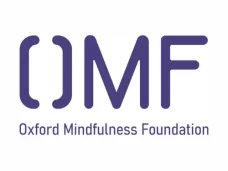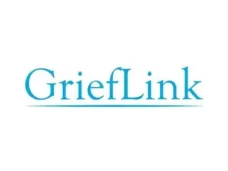Here I critically analyse some of the fundamental concepts of the Cognitive Behavioural Approach, explicitly looking at it through the lens of a Humanistic perspective. I then reflect on how these findings have impacted my orientation within the Humanistic model. Finally, I give an example of where I have applied CBT in my practice.
CBT began to appear in the late 1950s, with A.T. Beck (18/07/1921 to 01/11/2021) and Albert Ellis (27/09/1913 to 24/07/2007) being the most influential theorists. Both Beck and Ellis held that psychological disturbances are caused by negative and unhelpful thoughts and thought processes. Helping the client change these thoughts and thought processes would remedy the psychological disturbance (Rachman, 2009).
There are now many different CBT approaches; however, they all share similar therapeutic techniques and assumptions about the impact of human cognitions. Beck et al (1979, p147) define a cognition as 'either a thought or a visual image that you may or may not be aware of unless you focus your attention on it'. Considering CBT from the Humanistic perspective that humans should be understood as 'whole beings and should never be thought of as by-products of other processes' (Scholl et al, 2013, p5), it is evident that there is a conflict between them. This is because CBT is essentially a reductive therapeutic approach in its focus on cognitions and cognitive processes.
Fundamental to the CBT approach is the notion that thoughts are not necessarily truthful representations of events or experiences and should therefore be viewed simply as mental events (Beck et al 1979). CBT counsellors work with clients to look at their cognitions. They may actively suggest to clients that their subjective phenomenological experiencing of life, [sometimes] because of cognitive dissonance, could be negative or irrational. This conflicts with the Humanistic principles, for example, as detailed in Ansbacher's list, one being that 'It is necessary for counsellors to understand and value individual's subjective experience' (Raskin et al, 2008, quoted in Scholl, 2013). Therefore, it is evident that to apply a CBT approach in counselling, the practitioner may need to be directive in ways that could make adhering to Humanistic principles, such as honouring the clients' subjective experiencing of life more challenging.
CBT utilises varied and specific tools, including setting goals to help clients change their unhelpful cognitions. Examples of these are distraction, grounding strategies, and appraising automatic thoughts and images. The use of specific tools and corrective actions, for example, helping clients to alter their negative cognitions, when evaluated from the perspective of the defining characteristics of the Humanistic approach to counselling (Cain, 2001, cited Scholl, 2013 p 6) can be seen to differ from it at a fundamental level. This is because the Humanistic approach, is about valuing the client's individualism and creativity, capacity to know what it is that they need to heal and their 'freedom, right and ability to choose their goals and how to achieve them' (Cain, 2001, quoted in Scholl, 2013 p 6).
The Cognitive behavioural Therapy approach is centred around locating and defining cognitive dissonance in whatever form that may take to 'carry out the necessary cognitive restructuring that is the raison d'être of all forms of CBT' (Trower et al, 2016, p8). This contrasts with the Humanistic approach, which promotes the idea that a holistic method is more effective because, as Davidson ascertains, humans should be viewed as whole beings who should never be reduced to their parts (2000, cited in Scholl, 2013).
This short analysis of CBT from the perspective of the Humanistic approach has shown that they have some conflicting ideas about the best way to support individuals with their psychological disturbances. The fundamental differences are related to the contrast between the humanistic concept of holism and the focus of CBT on clients' cognitions and behaviour.
My orientation within the Humanistic framework has been impacted by studying and reflecting on CBT over the years. Whilst I believe a purist CBT approach to be reductionist, I find some of the tools utilised in the approach helpful in my counselling practice, as long as I apply them mindfully within the Humanistic framework. For example, I have had clients stuck in a cycle of punishing self-critical rumination who have benefitted from a more detailed focus on their unhelpful thoughts. This has helped them to develop metacognitive awareness and subsequently greater self-awareness, self-understanding and self-compassion.
It is worth noting that esearch seems to show that therapeutic outcomes are equivalent for all mainstream approaches (Luborsky et al., 1975: Smith et al, 1980, cited in Hollanders, 2000). I would classify myself as an Assimilative Integrationist Humanistic Person-Centred counsellor. Assimilative integration will help me improve and develop the theoretical, practical, and personal skills needed to meet each client's individual therapeutic needs. I hold a pluralistic perspective and dislike dogmatism, believing that there is inherent value in the integration of multiple counselling approaches.
References
Beck, A. T. (1975) Cognitive therapy and the emotional disorders. Madison. International Universities Press, Inc.Beck, A. T. Rush, A.J., Shaw, B.F., & Emery, G. (1979) Cognitive therapy of depression. New York. Guilford Press.Hollanders, H. (2000) ‘Eclecticism/Integration Historic Developments’. Palmer, S., woolfe, R. eds. Integrative and Eclectic counselling and Psychotherapy. London. Sage.
McLeod, J. McLeod, J (2016) ‘Assessment and Formulation in Pluralistic Counselling and Psychotherapy’. Cooper. M, Dryden, W. eds. The Handbook of Pluristic counselling and Psychotherapy. London. Sage.
McLeod, J. Sundet, R (2016) ‘Integrative and Eclectic Approaches and Pluralism’. Cooper. M, Dryden. W eds. The Handbook of Pluristic counselling and Psychotherapy. London. Sage.
Rachman, S. (2009) ‘Psychological treatment of anxiety: the evolution of behaviour therapy and cognitive behaviour therapy’. Annual Review of Clinical Psychology. vol 5. pp 97-119.
Rogers, C. (1980) A Way of Being. Boston. Houghton Mifflin.Scholl, M. B. et al, (2013) Humanistic Perspectives of contemporary counselling issues. New York. Routledge.
Trower, P. Jones J. Dryden W. (2016) Cognitive Behavioural Counselling in Action. 3rd edn. London. Sage.










